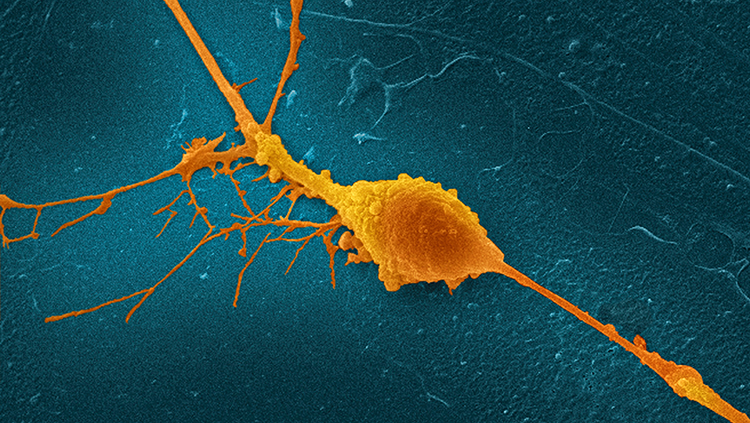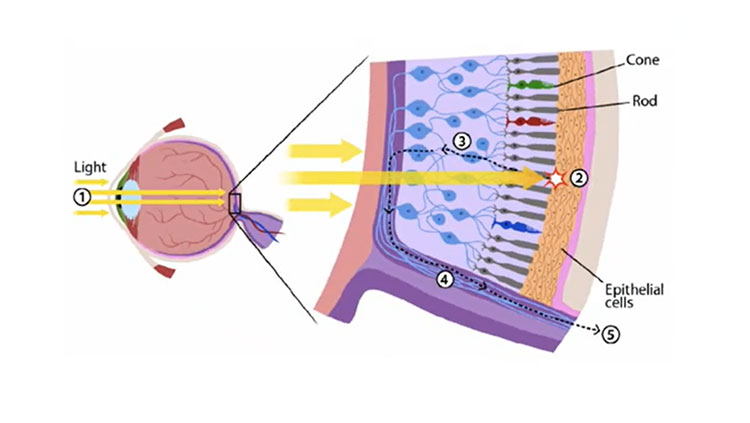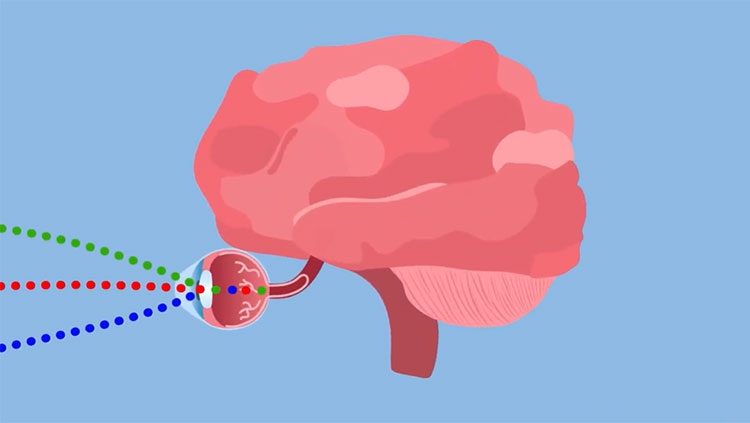The Eye-Brain Connection
- Published18 Jun 2019
- Author Michael W. Richardson
- Source BrainFacts/SfN
Light-sensing cells in your retinas transform light and color into electrical signals. But, to turn that information into a complete picture of the world around you, those signals need to be relayed to multiple areas of the brain quickly and accurately. That’s the job of cells like these — retinal ganglion cells. They transmit electrical impulses from photoreceptor cells down long axons that extend to the thalamus, hypothalamus, and areas in the midbrain. These long cables form the axon bundle known as the optic nerve.

CONTENT PROVIDED BY
BrainFacts/SfN
References
Zhou, Z. J., & McCall, M. A. (2008). Retinal ganglion cells in model organisms: development, function and disease. The Journal of Physiology, 586(18), 4343–4345.
doi: 10.1113/jphysiol.2008.160838
Also In Vision
Trending
Popular articles on BrainFacts.org


















